reckless glitch design – benjamin kiesewetter
During my design studies, I delved into several projects addressing the topic of gestaltung using computers. I am not talking about using CAD-software or Adobe products. I am a huge friend of pen and paper or clay to find shapes in my first steps of devloping designs. But what happens if we give these first steps of shaping and modeling to a computer program? I am not even talking AI. AI currently (2024) just reproduces human ideas and mainstreams the hell out of it.
I mean procedures, calculated structure, hard math, or rather physics.
The procedure of topology optimization, like the finite element method originating from the realms of mathematics and engineering, can be perceived as a variant of generative design tailored to a specific objective: material conservation in structural components. This objective addresses a predicament that I have encountered throughout my life, especially as a product designer — the limitation and inherent scarcity of our living space resources. Let me say climate change, shortage of simple materials such as copper or sands for concrete. Despite their finite nature, humanity habitually interacts with these resources as if they were inexhaustible. I particularly observe a significant degree of waste in motorized individual transport. While this may seem like a minor aspect on a global scale, it is one in which every participating consumer can personally influence.
Okt. 2014 – Feb 2015
Hochschule Magdeburg-Stendal
This is my studies final Thesis. It is in German but most of it are pictures, so even if you cannot read it, have a peek inside.
The original cover I made from 1mm of plywood – the same material I used for some models – that I laser-cut in a rapid prototyping workshop and glued onto gray cardboard.
I wanted something slightly bigger then DIN-A4 and wider, to give my images some space.
sheet: 354 x 224 mm
cover sheet: 358 x 232 mm
Double page size: 644 x 224 mm
Back in the days, products were made to last – they say.
Sure, if they wanted to make something last for a decade, engineers had to over.engineer it, so old buildings, cars or other products may last centuries.
But when it comes to vehicles, over-engineering them ofte also results in mass.
So while over-engineering tries to make something last by brute force, or brute material, Toplogy Optimisation is an attempt to achieve it by clever developing of shapes. A simplified example: The cantilever problem – a weight is to be suspended at a distance from a wall (a). A thick beam across the shortest distance is the simplest solution (b). A compression strut against the bending direction of the beam allows for thinner beams (c). A tension cable replaces the compression strut (d).
A much better example are trees. They tend to last for decades or centuries by growing into the perfect shape for the job. Look at trees during storm. It looks impossible, how they bent and move and still carry their weight, without breaking – or at least before breaking. A reason for that is, that they grow into the shape they need to be in. But we cannot grow, let’s say a car. Or can we?
Kind of: there are actually different ways: By calculating, for example the Finite Element Method, and by examining existing natural examples, as described by the Soft Kill Option method, both having similar results.

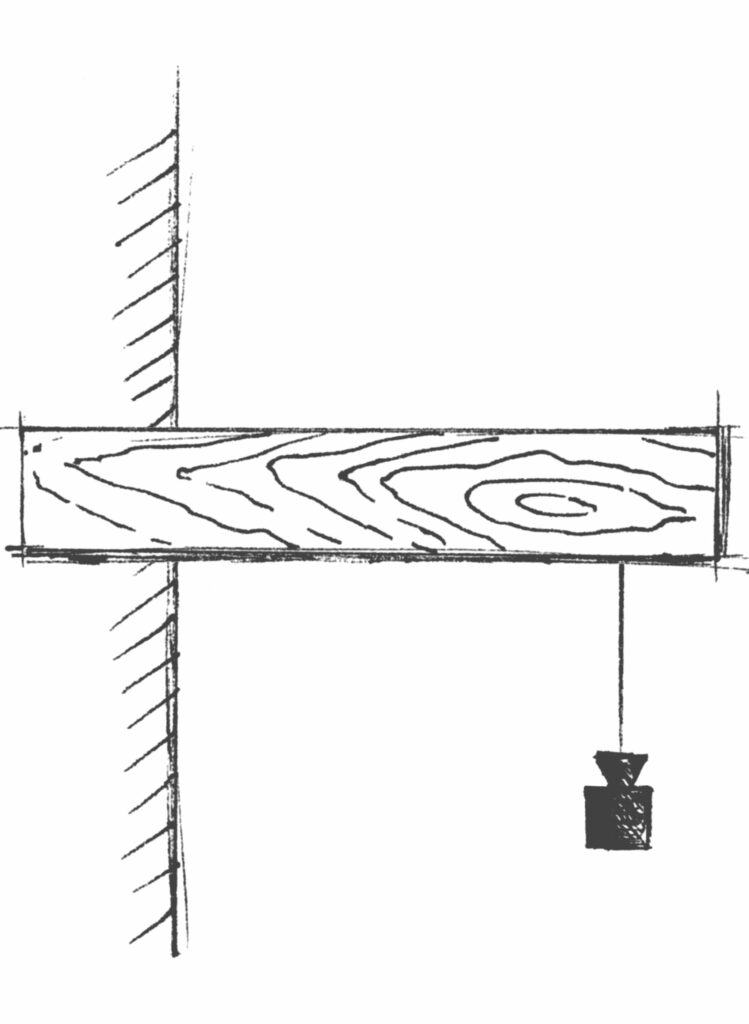
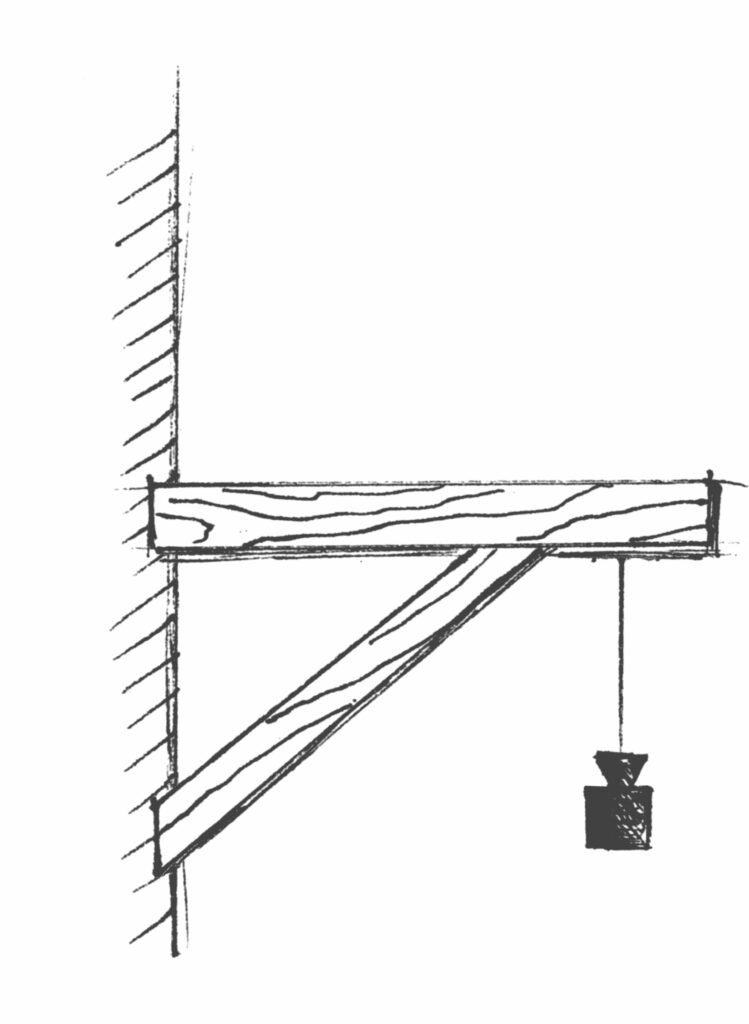
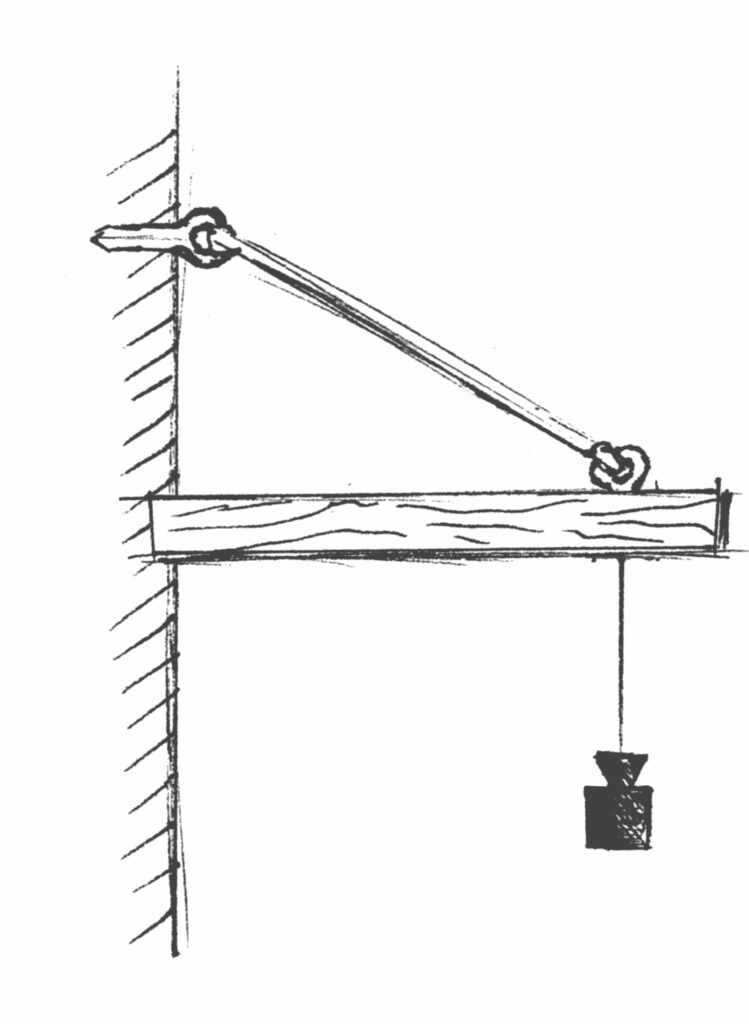
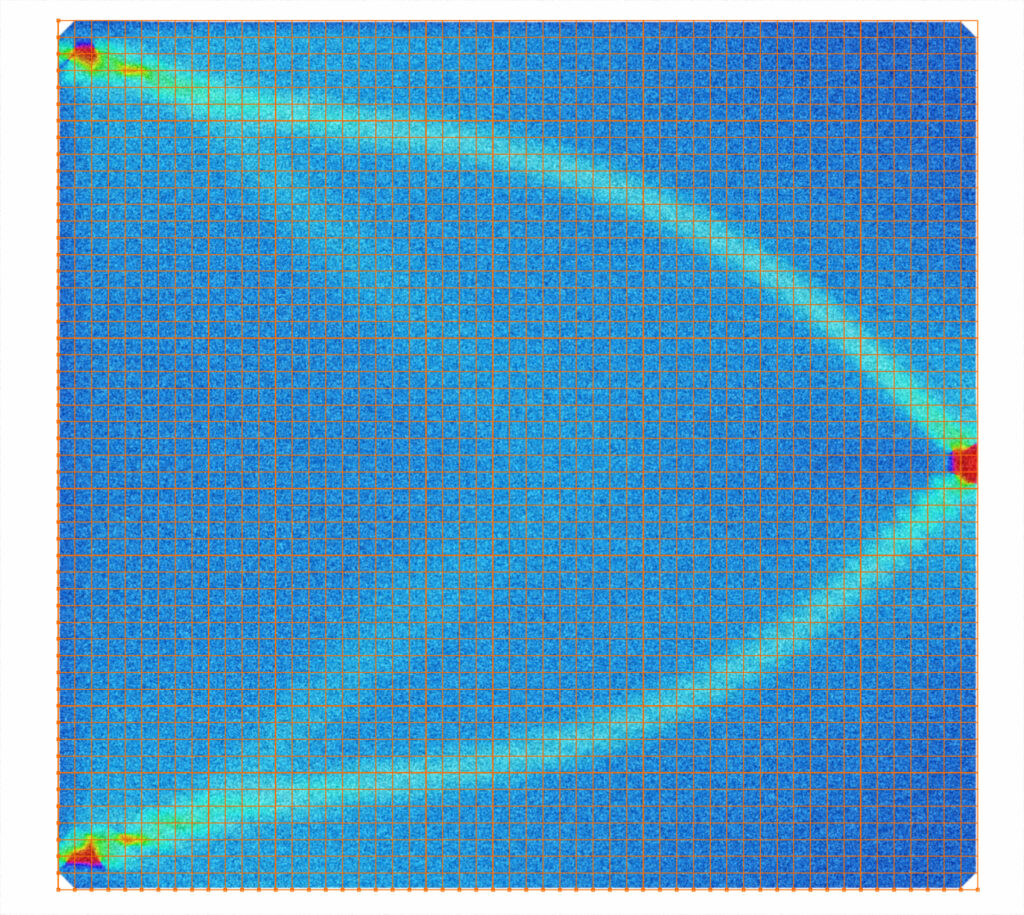
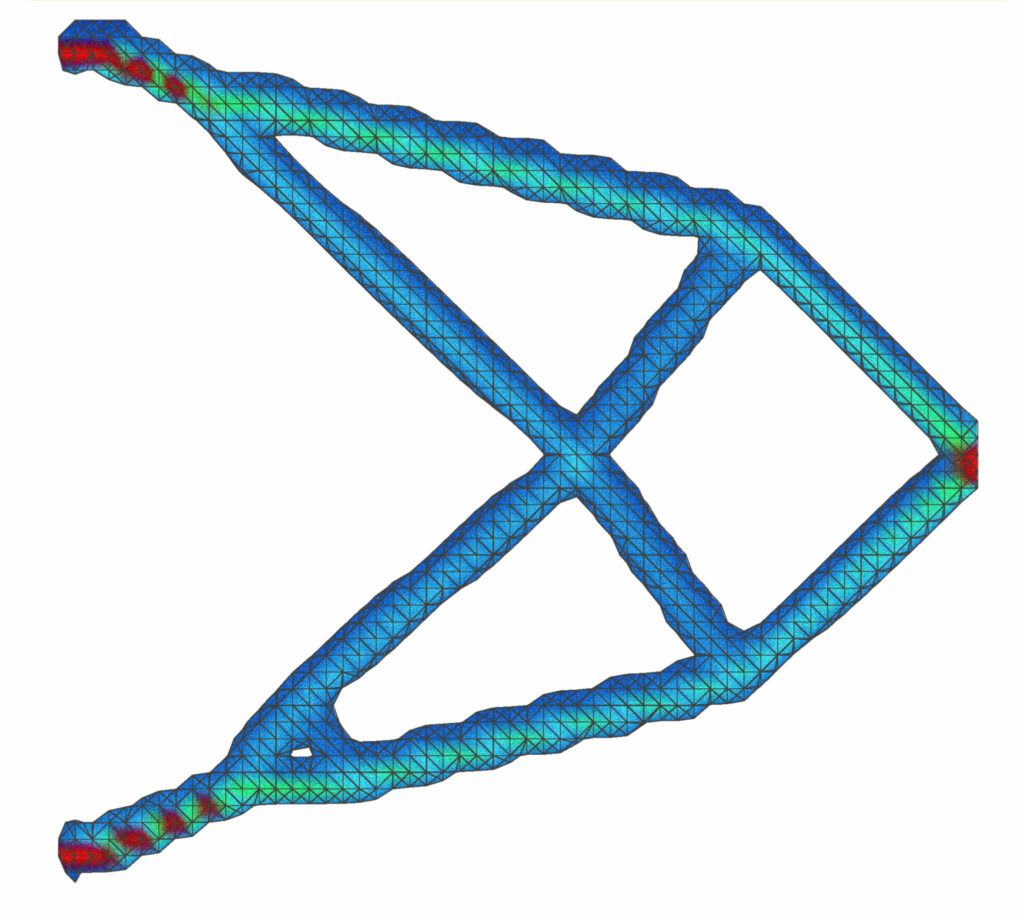
FEM is a way to solve a mechanical problems (resulting in multidimensional differential equations) by cutting the accessable volume into small pieces and then calculate for each piece, where it will need material to sustain certain forces.
That way, the solution for our centilever problem will look a bit more refined.


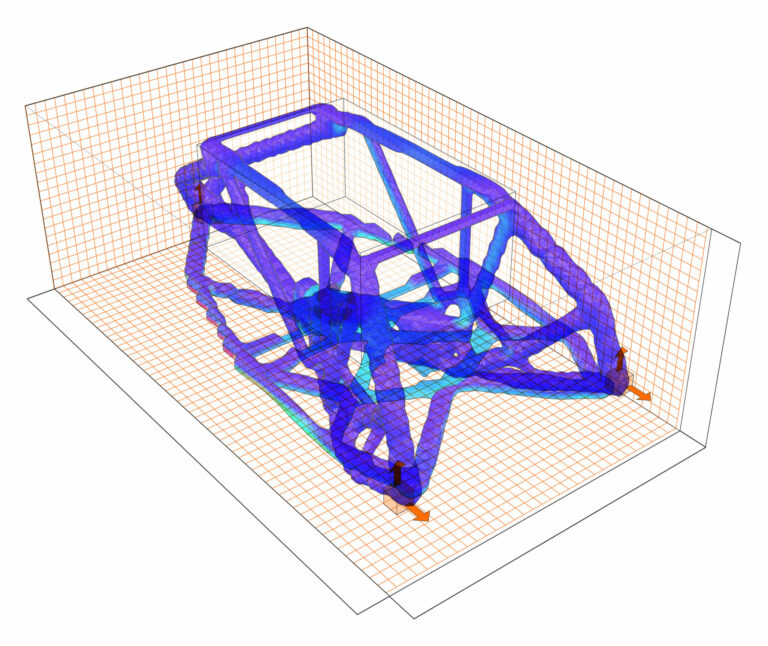

I used the CAD software Rhinoceros 3d, and it’s programming plugin Grashopper with the FEM plugin Millipede to do my FEM calculations. I had them running on a 2011 intel core i7 PC for days. Initially experimenting with the boundary conditions and finetuning them and later running refining iterations took days of calculation. So I had to sacrifice quality to time efficiancy. One sacrifice was by reducing resolution and number of refining iterations. Another sacrifice was that Millipede, the FEM-plugin only alowed for static forces, while a vehicle has to deal with gravitation, acceleration, deceleration and centrifugal forces. Since the task was not to calculate the perfect solution, but to experiment with how to use such a calculated solution and make something out of it in terms of Gestaltung, that attempt was acceptable.
Rhinoceros 3d with Grashopper programming plugin and Millipede FEM plugin
length 2.5m
width 1.4m
height 1.0m
20 cells per meter